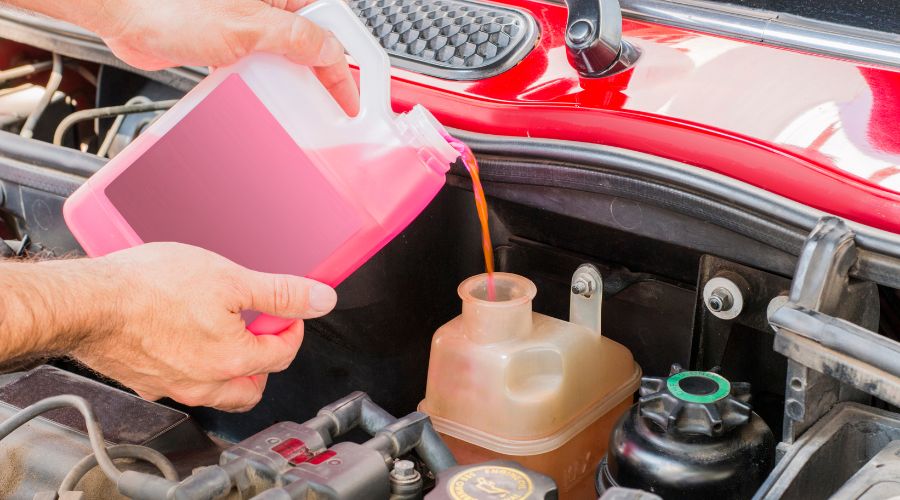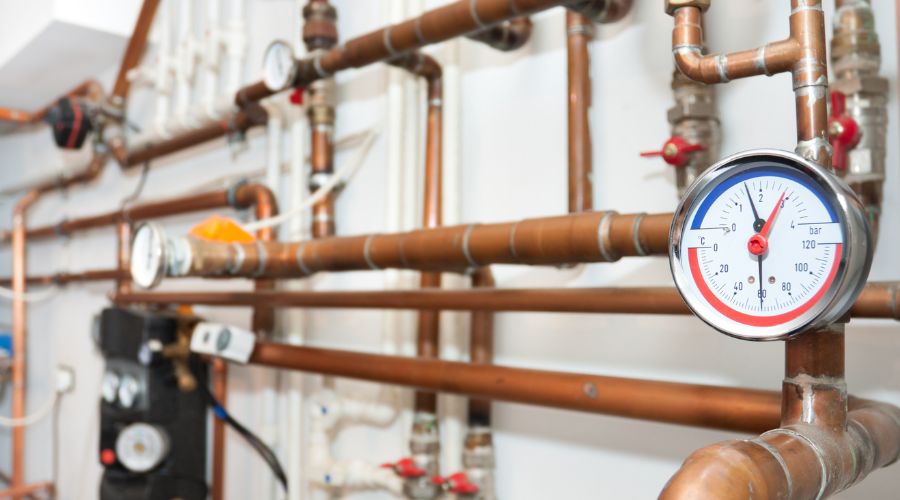We get asked frequently if air conditioning units use coolant, or if coolant is the same thing as refrigerant.
If you use the broad definition of coolant as a liquid or gas which is used to absorb heat from a system, you could consider refrigerant as a type of coolant.
However, although there are many types of coolant used for many different processes, the name coolant is most often used for the product specifically used to regulate the temperature of car engines. This means chemicals labeled as coolant and refrigerant are very unlikely to be interchangeable in terms of use, as AC systems and heat pumps require specific types of two-phase refrigerant to run properly.
What is Coolant and what purposes does it serve?
Coolant is typically a liquid although it can have gas forms such as air, hydrogen, and inert gases. It’s used to reduce or regulate the temperature of different systems, with the most common being water.
In different contexts, the term coolant may refer to:
- Automotive coolant
- Refrigerant
- Heat transfer fluid
- Industrial cutting fluid
- Antifreeze
- Heavy water
- Mineral oils
- Liquid nitrogen
- Dry ice
- Nanofluids
Many mechanical and industrial systems produce heat as part of the energy exchange which occurs for them to function. Changes in weather and environment can also heat up equipment. Without coolants, this can lead to the system overheating or breaking down at a faster rate. Processes can also happen differently at different temperatures, so it is often important to keep all the elements at a consistent temperature. Coolant helps with this regulation.

Many forms and types of substance can operate as a coolant. Different options are most appropriate for regulating different types of equipment, and some are more common than others. Some kinds of coolants, known as two-phase coolants, are used in both their liquid and gas forms and use the processes of evaporation and condensation to serve their purpose.
Outside of laboratories and industrial processes, coolant is most often used as a shortened term for automotive coolant specifically.
What is refrigerant and what is it used for in AC systems?
Refrigerants are two-phase coolants that are used in air conditioning systems and heat pumps to transfer energy between two environments.
Refrigerants are used in the AC system to transport heat from one part of the system to another, absorbing and then releasing heat through its journey either from inside to outside in hot or summer environments or in reverse in heating modes in the winter. This happens in the process of evaporation as part of a closed system so, unless there is an accident or leak, refrigerant levels should remain consistent and, in most cases, never need to be replaced.

Refrigerants are used in almost all domestic, commercial, and industrial air conditioning systems. In simple set ups they are used in either heat or cooling mode, and latest VRV or VRF systems control how much refrigerant is moving through the system at any one time in order to operate highly efficiently.
More complex 3-pipe air conditioning systems can deal with simultaneously heating and cooling different areas of a building, for example server rooms/warehouses would have a different temperature requirement to an office.
What types of refrigerants are commonly used in air conditioning systems?
In the UK, there are several types of air conditioner refrigerants including R410A, R407C, R134a, and R32.
These refrigerants have different properties, such as boiling point, pressure, and environmental impact. R410A has been commonly used in air conditioning systems because it is an efficient refrigerant that can handle high pressures and temperatures.
R407C is another popular refrigerant that is similar to R410A but has a lower global warming potential. R134a is commonly used in smaller air conditioning systems, and it has a low global warming potential, making it environmentally friendly.

R32 is a newer refrigerant that is becoming increasingly popular because of its low global warming potential and high energy efficiency. The latest air conditioning equipment running on R32 typically uses 10% less energy consumption due to the way it efficiently conveys heat and has a global warming potential approx. 30% lower than both R22 and R410A.
R22, also known as chlorodifluoromethane, was a commonly used refrigerant in air conditioning systems until recently. However, it is no longer used because of its harmful effects on the environment. R22 is a hydrochlorofluorocarbon (HCFC), which means that it contains chlorine, a substance that can deplete the ozone layer and contribute to global warming. Any old air conditioning systems which still contain R22 can no longer be repaired or refrigerant replaced in the event of a leak or breakdown.
The Montreal Protocol, an international treaty signed in 1987, aimed to phase out the production and use of substances like R22, which are harmful to the ozone layer. As a result, the production and import of R22 was banned in the UK and the European Union from 2010, and its use in air conditioning systems was phased out over time.
Conclusion
In conclusion, while the term “coolant” can encompass a variety of liquids or gases used to regulate the temperature in different systems, it is not interchangeable with refrigerant in the context of air conditioning and heat pump systems.
Refrigerant is a two-phase coolant specifically used to transfer energy between two environments in AC systems and heat pumps. In the UK, commonly used refrigerants include R410A, R407C, R134a, and R32.
It’s essential to use the right refrigerant for your AC system or heat pump to ensure it functions efficiently and in an environmentally friendly manner.
If you have questions about an existing air conditioning system or are considering the installation of a new one, the specialists at TEK work hard within the UK to design, install, and maintain cooling and heating systems. Tell us your requirements, and our experts are sure to come up with a comprehensive solution.







